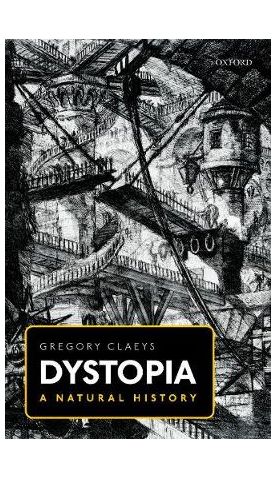אנו משתמשים ב-Cookies כדי לשפר את החוויה שלך. כדי לקיים ההנחיה החדשה של e-Privacy, עלינו לבקש את הסכמתך להגדיר את ה-Cookies. קבלת מידע נוסף.
121.00 ₪
Dystopia: A Natural History
121.00 ₪
ISBN13
9780198820475
יצא לאור ב
Oxford
עמודים
576
פורמט
Paperback / softback
תאריך יציאה לאור
17 במאי 2018
The first monograph devoted to the concept of dystopia: redefining the central concepts and chronology of the genre, and offering a theoretical overview and prehistory of the concept; an account of twentieth-century totalitarian regimes as dystopias; and a brief history of the literary dystopia from the early nineteenth century to the present.
Dystopia: A Natural History is the first monograph devoted to the concept of dystopia. Taking the term to encompass both a literary tradition of satirical works, mostly on totalitarianism, as well as real despotisms and societies in a state of disastrous collapse, this volume redefines the central concepts and the chronology of the genre and offers a paradigm-shifting understanding of the subject.
Part One assesses the theory and prehistory of 'dystopia'. By contrast to utopia, conceived as promoting an ideal of friendship defined as 'enhanced sociability', dystopia is defined by estrangement, fear, and the proliferation of 'enemy' categories. A 'natural history' of dystopia thus concentrates upon the centrality of the passion or emotion of fear and hatred in modern despotisms. The work of Le Bon, Freud, and others is used to show how dystopian groups use such emotions. Utopia and
dystopia are portrayed not as opposites, but as extremes on a spectrum of sociability, defined by a heightened form of group identity. The prehistory of the process whereby 'enemies' are demonised is explored from early conceptions of monstrosity through Christian conceptions of the devil and witchcraft,
and the persecution of heresy.
Part Two surveys the major dystopian moments in twentieth century despotisms, focussing in particular upon Nazi Germany, Stalinism, the Chinese Cultural Revolution, and Cambodia under Pol Pot. The concentration here is upon the political religion hypothesis as a key explanation for the chief excesses of communism in particular.
Part Three examines literary dystopias. It commences well before the usual starting-point in the secondary literature, in anti-Jacobin writings of the 1790s. Two chapters address the main twentieth-century texts usually studied as representative of the genre, Aldous Huxley's Brave New World and George Orwell's Nineteen Eighty-Four. The remainder of the section examines the evolution of the genre in the second half of the twentieth century down to the present.
| עמודים | 576 |
|---|---|
| פורמט | Paperback / softback |
| ISBN10 | 019882047X |
| יצא לאור ב | Oxford |
| תאריך יציאה לאור | 17 במאי 2018 |
| תוכן עניינים | Part One: The Theory and Pre-History of Dystopia1: Rethinking the Political Dystopia: the Group and the Crowd2: Monstrosity and the Origin of Dystopian SpacePart Two: Totalitarianism and Dystopia3: The Caveman's Century: The Development of Totalitarianism from Jacobinism to Stalinism4: Totalitarianism from Hitler to Pol PotPart Three: The Literary Revolt against Collectivism5: Mechanism, Collectivism, and Humanity: The Origins of Dystopian Literature, 1810-19456: The Huxleyan Conundrum: Brave New World as Anti-Utopia7: Vaporising the Soviet Myth: Orwell's Nineteen Eighty-Four8: The Post-Totalitarian Dystopia, 1950-2015Conclusion: Dystopia in the 21st CenturyBibliographyIndex |



Login and Registration Form